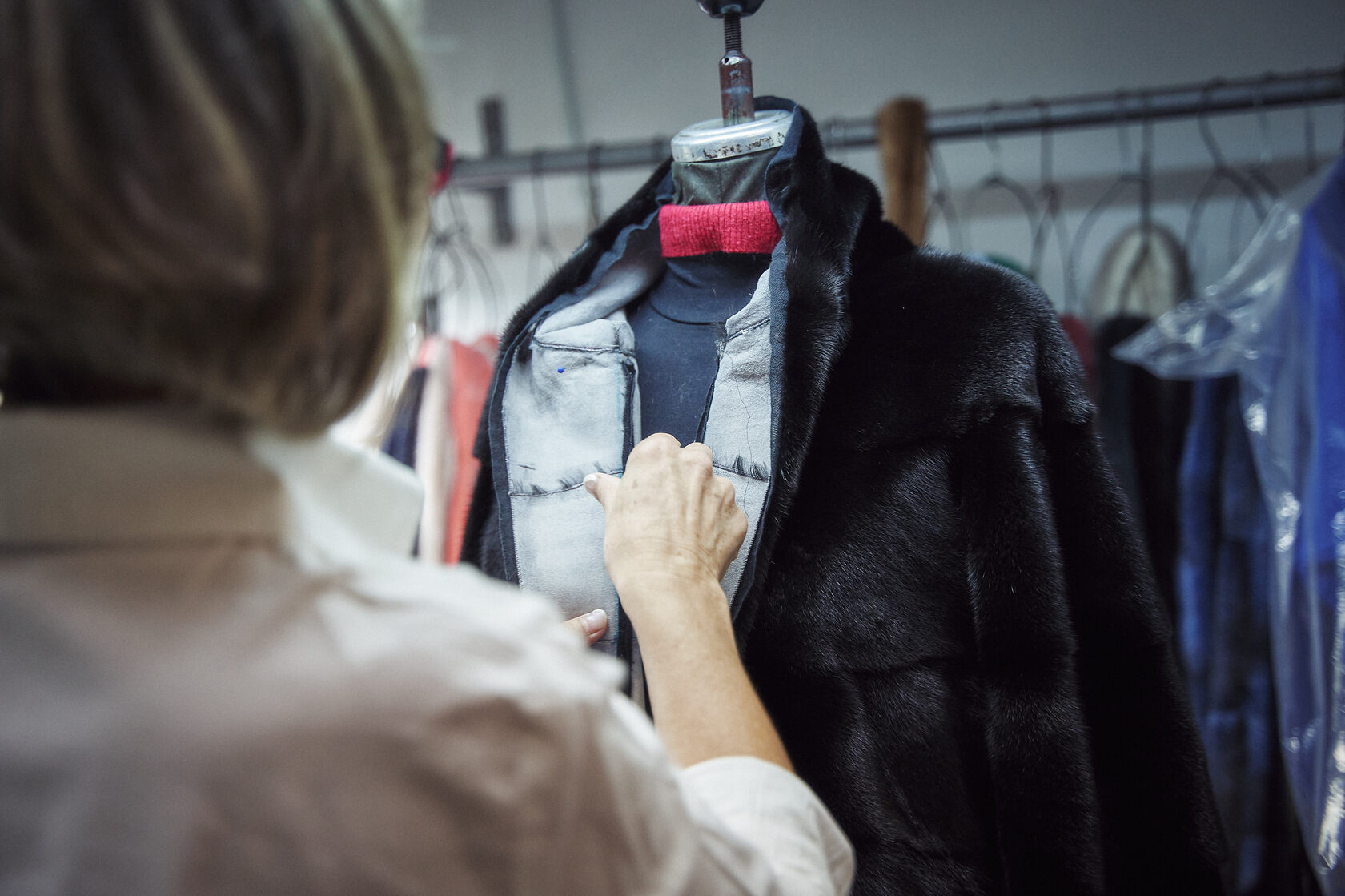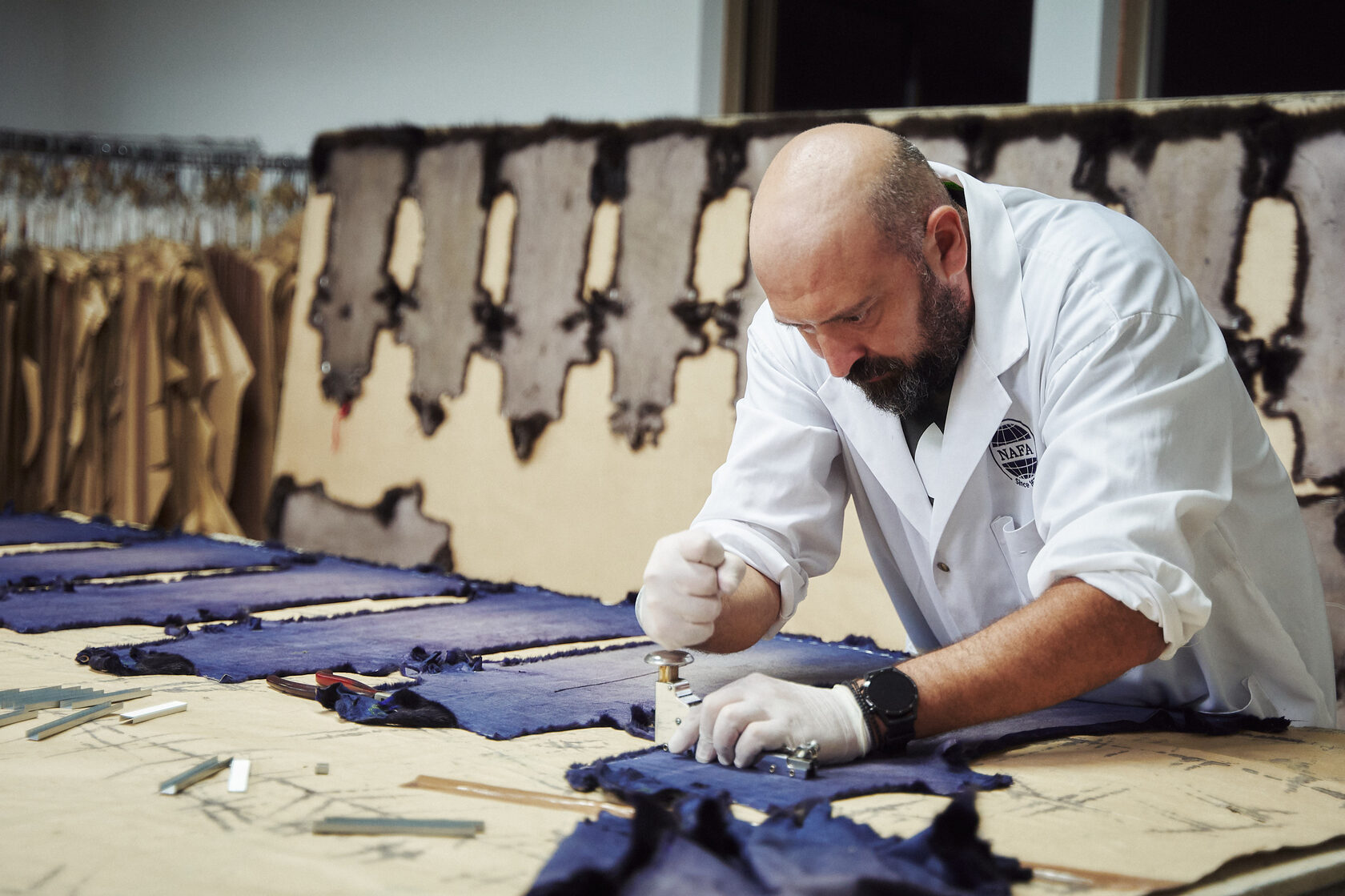There are no specific tricks for assessing the quality of fur, but practical experience is still necessary. Therefore, it's advisable to start evaluating fur quality in upscale boutiques, where the use of high-quality, meticulously processed mink pelts is certain in mink coats. Let's begin evaluating the fur in this way: run your hand against the fur and observe its behavior. Genuine mink fur should quickly return to its original state within a few seconds. If the fur remains ruffled or tangled, it's definitely not mink. Next, carefully examine the fur's length. Mink always has consistent strand lengths. Moving forward, the next criterion for determining the authenticity of mink is to look inside the fur. Mink has a unique fur structure inside, close to the skin; there should be a distinctive downy layer that completely covers the fur. Once you've seen this type of down, it becomes challenging to mistake it.

In essence, we can already determine whether mink or another fur is used on the coat. However, the choice doesn't end there, as the quality of the mink itself can vary. Checking its quality becomes the task of every buyer. To begin with, it's worth simply pinching or gently shaking the coat. A good mink should not shed any fur after pinching or shaking.
There are cases where mink fur undergoes dyeing. If the color of the dye matches the natural color of mink, this should be a cause for concern. Why dye a coat in its natural color? Certainly, it might be to conceal imperfections, but it could also be purely for a fashionable hue. Therefore, don't be alarmed by the dye; it doesn't harm the durability of the coat if done correctly. The professionalism of the dyeing process can be checked in one way: run a white cloth along the fur. If the cloth remains clean and the fur doesn't stick to it, it indicates high-quality dye, making such a coat a suitable purchase.
There are cases where mink fur undergoes dyeing. If the color of the dye matches the natural color of mink, this should be a cause for concern. Why dye a coat in its natural color? Certainly, it might be to conceal imperfections, but it could also be purely for a fashionable hue. Therefore, don't be alarmed by the dye; it doesn't harm the durability of the coat if done correctly. The professionalism of the dyeing process can be checked in one way: run a white cloth along the fur. If the cloth remains clean and the fur doesn't stick to it, it indicates high-quality dye, making such a coat a suitable purchase.

The final piece of advice involves observing mink from a distance. If a mink coat has been stored correctly and is made from high-quality fur, it will shine and shimmer in the sunlight. Such a mink coat will undoubtedly stand out in a crowd. With this, we've covered the assessment of the fur itself; now let's focus on evaluating the skin.
Assessing the mink skin:
Before crafting a coat, the fur undergoes a tanning process, and many qualities of the future garment depend on it. A professionally tanned skin will be soft, lightweight, dense, and will not let cold air pass through, ensuring the coat's durability. If the skin is poorly tanned, forget about these positive attributes.
Assessing the mink skin:
Before crafting a coat, the fur undergoes a tanning process, and many qualities of the future garment depend on it. A professionally tanned skin will be soft, lightweight, dense, and will not let cold air pass through, ensuring the coat's durability. If the skin is poorly tanned, forget about these positive attributes.

Therefore, we should not overlook the rules for assessing mink skin. The best way to evaluate its cover, known as "mezdra," is to look beneath the lining. A good skin should be white (if it's not dyed) and should not have any yellowish tint. Once you've peeked there, examine the connections between the skins (they should be sewn, not glued), check the quality of the seams, and the size of the pieces from which the garment is made (the smaller the pieces, the cheaper the coat should be). By the way, reputable manufacturers never sew the bottom of the lining since they have nothing to hide, while counterfeit goods meticulously conceal the underside. If the seams and color are satisfactory, all that's left is to try it on. However, there's a small secret here too – before heading to the mirror, feel the weight of the coat on yourself. It should be light.

Where to buy a quality mink coat?
Remember, we will definitely teach you how to choose a mink coat correctly, but be prepared to follow our advice without hesitation. The first piece of advice is straightforward: purchase mink only from reputable stores and boutiques. To be more specific, consider flying to either Greece or the UAE.
We recommend the stores of the Greek brand Marco Varni, which are located worldwide, including Dubai.
Remember, we will definitely teach you how to choose a mink coat correctly, but be prepared to follow our advice without hesitation. The first piece of advice is straightforward: purchase mink only from reputable stores and boutiques. To be more specific, consider flying to either Greece or the UAE.
We recommend the stores of the Greek brand Marco Varni, which are located worldwide, including Dubai.
